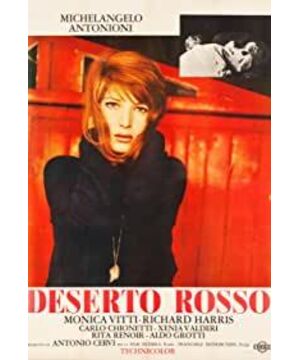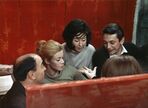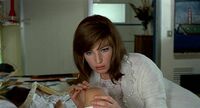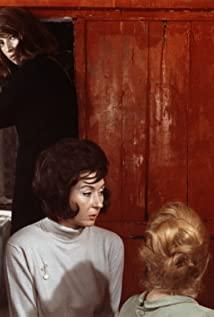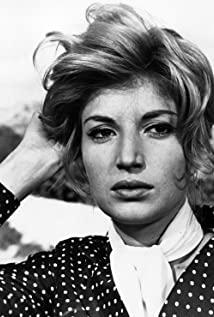What people talk about the most about this film is its color, and some even claim that "Red Desert" is the first color film in the true sense. "Red Desert" is a color experiment by Antonioni. He said: "I don't think the red desert is a result, it is just an exploration." What he explores is the subjectivity of color, which makes color a character in the play. As his first color film, Antonioni said: "Color forces you to create." Although this film has a realistic appearance, it is an out-and-out surreal subjective expression. On the one hand, it is because color originates from The portrayal of the protagonist Julia’s inner world, on the one hand, also stems from the fact that the scenes shown in the film are basically surreal-even the most common conversation, like a dream, pushing the film’s dream-making function to the extreme .
Specifically, the red in the film is undoubtedly a symbol of life and emotion. For example, the red walls of the wooden house imply the desire to move around in the characters, but red is not the protagonist of the film's color. On the contrary, it belongs to the excluded category. Along with red, there is green, which appears on Julia's clothes at the beginning and end of the movie. Green is a symbol of life and hope. In front of a noisy and messy factory, this green is especially precious. And most of the colors appearing in the film are negative: blue, which represents communication barriers, such as handrails at home; gray, which represents confusion, and the most memorable image is endless fog; yellow, which represents the alienation of life, is constantly moving from the factory Emerging from the chimney...Here, we do not intend to analyze the meaning of each color in the film one by one and find their counterparts, but want to show that it is precisely because of the prominence of the color that the film has become pure Deleuze said. Sound and light image. Compared with motion-image, it appears deeper and the subject is usually deeper. Antonioni created a desert of love for us through the symbolism of color.
From the perspective of the play, its story tension is dispelled. Antonioni said: "The dialogue is compressed to the minimum necessary. In this sense, it is connected with color." What we saw in the film showed only a few fragments of the life of the protagonist Julia. In Godard's interview with Antonioni, Antonioni said that what he wanted to show was actually Julia's efforts to adapt to the environment. At the end of the film, Antonioni seems to imply that Julia has adapted to the environment, because it can calmly tell his son that the bird will no longer fly to the yellow smoke from the factory chimney...
Generally speaking, we will all I think this film shows the alienation of people in the industrial environment, but Antonioni said that this is too simple. What he wants to express is the "beauty" of the world, "even the possible beauty of the factory...usually The lines and chimneys of the factories may look better than the woods. This is a rich world, a vivid and practical world. "Although today is not an era where the author is alone, but we may be able to learn from Antonioni’s interpretation. I saw the similarities between him and Julia: both were trying to compromise with the environment. As an ordinary person, Julia uses physical illness to resist, while Antonioni uses art to express the "beauty" of industrial civilization.
As a classic in the history of film, "Red Desert" is not only in its theme, but also in that it is a purely formalist film, yet it can completely dissolve all the colors in the narrative without showing anything. Traces of mechanical collage, this can only be done by a great artist!
View more about Red Desert reviews


